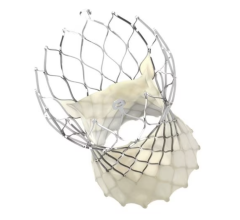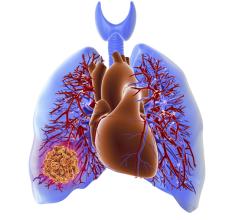
The Corindus CorPath robotic cath lab navigation system allows operators to sit and control the procedure from behind a lead-lined booth, so they do not have to wear heavy aprons during the procedures.
May 5, 2021 — A late-breaking study of the Siemens Healthineers Corindus Corpath GRX second-generation cath lab robotic system had high rates of clinical and technical success across the spectrum of lesion complexity. The multicenter PRECISION GRX Study was presented at the Society for Cardiovascular Angiography and Interventions (SCAI) 2021 meeting.
This second generation robotic-assisted percutaneous coronary intervention (PCI) system enables robotic guidance of catheters, guidewires and balloons and stent delivery from a lead-lined cockpit across the room from the patient. The system removes the operators from the radiation field and allows them to precisely navigate the wires using a joystick console and eliminates their need to wear lead, or to stand for the procedures.
The PRECISION GRX study (NCT 03278301) evaluated the safety and efficacy of CorPath GRX in treating a real-world, all-comers population.
This prospective international multicenter registry study enrolled patients with obstructive coronary artery disease (>70% stenosis) with clinical indications for PCI treated with robotic PCI. The co-primary endpoints were clinical success (final TIMI 3 flow, <30% residual stenosis without in-hospital major adverse cardiac event) and technical success (robotic clinical success without the need for unplanned manual assistance/conversion).
The study enrolled 980 patients (65.4 ±11.6 years; 73.5% male; 1,233 lesions), 31.6% with acute coronary syndrome and 68.8% with ACC/AHA type B2/C lesions at 20 centers (Table). Clinical success was achieved in 97.8 % (955/976) of subjects and 98.1% (1,204/1,227) of lesions treated robotically. Device technical success was achieved in 86.5% (848/980) of subjects and 89.2% (1,100/1,223) of lesions treated robotically. Technical success was higher for type A/B1 lesions as compared to type B2/C lesions (94.5% vs 85%, p<0.001).
The trial also reported on the robotic guide catheter and wire control and the new Rotate on Retract function, which mimics operator hand-wire manipulations in complex lesions and chronic total occlusions (CTOs). Corindus recently introduced several advanced robotic wire movements to more accurately mimic interventional wire manipulation techniques. Read more about this new technology.
This study was conducted by the following researchers: Ehtisham Mahmud, M.D., FSCAI, The University of California; Jeffrey M. Schussler, M.D., FSCAI, Baylor University Medical Center; William J. Nicholson, M.D., Emory HealthCare; Tejas M. Patel, M.D., FSCAI, Apex Heart Institute, India; William Lombardi, M.D., University of Washington Medical Center; Frances Wood, M.D., WakeMeds; Adam C. Salisbury, M.D., FSCAI, Saint Luke's Mid America Heart Institute; Srini Potluri, M.D., FSCAI, Baylor Scott and White The Heart Hospital — Plano; and Alexandra J. Lansky, M.D., FSCAI, Yale University.
Related Robots in the Cath Lab Content:
VIDEO: Standardizing PCI Through Smart Robotic Procedural Automation
FDA Clears Corindus CorPath GRX for Peripheral Vascular Interventions
VIDEO: Corindus CorPath Robotic PCI System For The Cardiac Cath Lab
Corindus CorPath Used in World's First-in-Human Telerobotic Coronary Intervention
14 Ways to Reduce Radiation Exposure in the Cath Lab
Corindus Seeking Neurovascular Intervention Clearance for CorPath GRX Vascular Robotic System
Innovations Driving the Cath Lab Technology of Tomorrow
Siemens Completes Acquisition of Cath Lab Robotics Vendor Corindus
First Robotic Coronary Angioplasties Performed With Robocath System in Germany
Hoag Performs First Robotic Carotid Artery Stenting on West Coast


 May 05, 2025
May 05, 2025 









